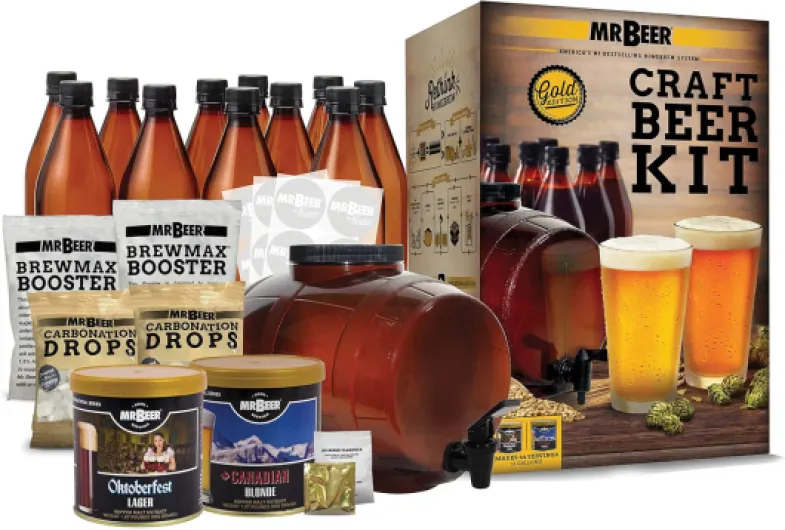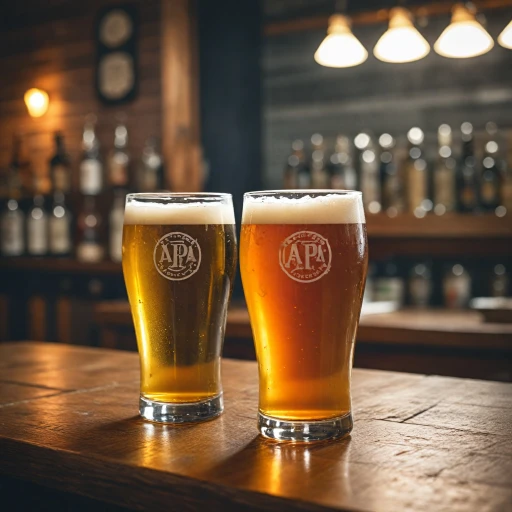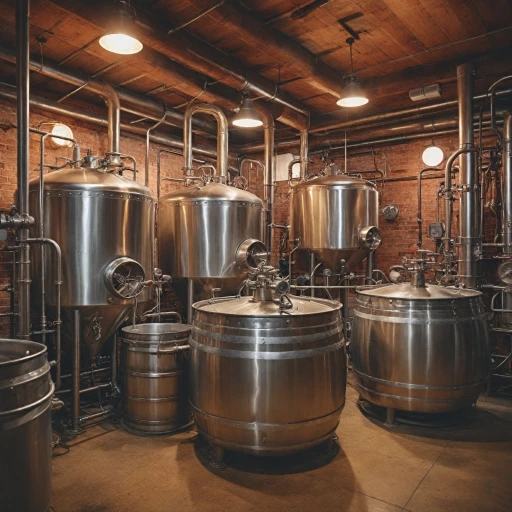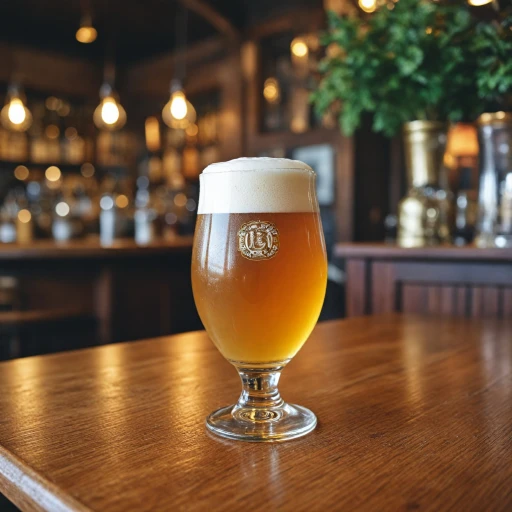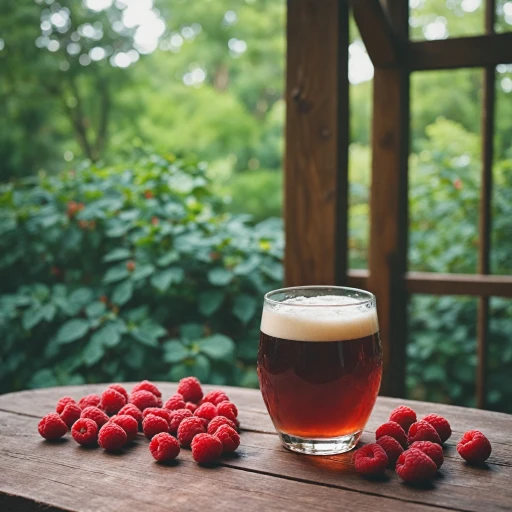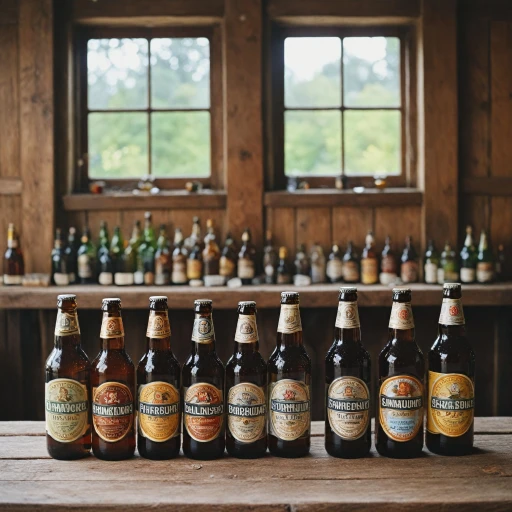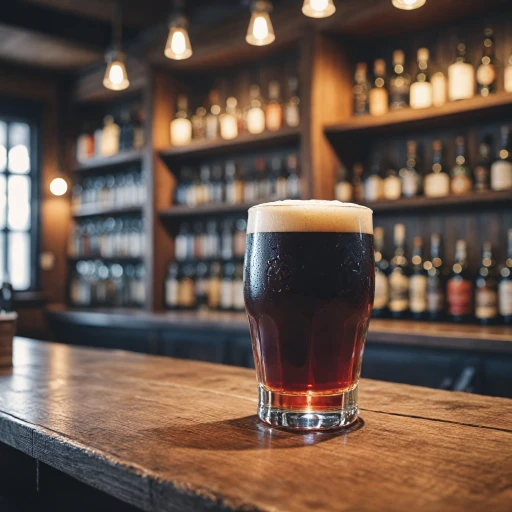
What is IBU and Why It Matters
Unveiling IBU: The Basics
International Bitterness Units, commonly abbreviated as IBU, is a term you're likely to encounter when diving into the world of beer. It’s essentially a scientific measure of a beer’s bitterness level, which plays a significant role in the overall taste profile of your brew. This bitterness primarily comes from the hops used in the brewing process, but it's crucial to note that a higher IBU doesn't necessarily mean an overpoweringly bitter beer.
Understanding the IBU scale can enhance your beer-drinking experiences, allowing you to select a beer that matches your flavor preferences. As you explore further, you'll find that how IBU is measured showcases a more technical side and how hops are pivotal in crafting the depth of bitterness in a beer. Curious to explore the flavors that different bitterness levels can bring out? Take a look at the Hazy Jane IPA experience for an intriguing taste journey.
Moreover, comparing IBU across various beer styles can provide insights into why some beers have distinct taste profiles that might align with your preferences or make you an adventurous taster. Lastly, deciphering beer labels with the IBU knowledge in hand can make your next beer selection a well-informed decision and even more enjoyable.
How IBU is Measured
Unveiling the IBU Calculation Process
The International Bitterness Units (IBU) is a critical metric in the beer world, representing the bitterness level of a beer. But how exactly is IBU measured? Understanding this process can greatly enhance your beer enjoyment, giving you insight into what to expect from different brews.
Primarily, the bitterness in beer comes from hops, which release alpha acids during the brewing process. These alpha acids are the key component used to calculate IBU. Here's a simplified look at the process:
- Hop Addition: When hops are added to the boiling wort, alpha acids are released. The amount of these acids depends on the type of hops used, the quantity, and when they are added during the boil.
- Isomerization: During the boiling phase, these alpha acids undergo a chemical process known as isomerization, transforming into iso-alpha acids, which are bitter and dissolve into the wort.
- Calculation: The IBU is then determined by measuring these iso-alpha acids in parts per million (ppm). The more iso-alpha acids present, the higher the IBU and consequently, the beer's bitterness.
Brewers use precise equipment to measure these elements, ensuring that each brew meets the desired specifications of IBU. This meticulous attention to detail ensures consistency and allows for a wide range of beer styles to offer unique tasting experiences. To learn more about how different ingredients impact beer flavors, explore the world of Sultana hops and their contribution to beer bitterness and aroma.
While understanding IBU measurement helps explain the science behind beer brewing, it's important to remember that the perception of bitterness can still vary based on personal taste and other factors covered throughout this guide.
The Role of Hops in Beer Bitterness
The Impact of Different Hop Varieties on Bitterness
Hops are the primary source of bitterness in beer, significantly affecting its IBU levels. Different hop varieties contribute varied levels of bitterness and aroma, which are essential for achieving the desired flavor profile in a brew.- Alpha Acids: Hops contain alpha acids, which are the main compounds responsible for the bitter taste. During the boiling process, these acids are isomerized, transforming into iso-alpha acids that provide that characteristic bitterness we associate with beer.
- Variety Differences: Different hops varieties have different levels of alpha acids. For example, high-alpha hops, such as Magnum or Warrior, deliver more bitterness to beers compared to low-alpha varieties like Saaz or Tettnang.
- Brewing Technique: The timing of hops addition also plays a crucial role. Early addition during the boiling process tends to extract more bitterness, while late addition, like dry hopping, often contributes to aroma rather than flavor.
Comparing IBU Across Beer Styles
IBU Variation Among Popular Beer Styles
Beer styles vary significantly in their International Bitterness Units (IBU), reflecting the wide range of experiences you can have when sampling different brews. Understanding these variations aids in appreciating how bitterness contributes uniquely to each style's overall profile. Lighter Brews Lighter beer styles, such as lagers and pilsners, generally have a lower IBU, often ranging between 5 and 35. These beers are designed to be crisp and refreshing with a delicate balance of malt sweetness and hop bitterness. A lower IBU doesn’t mean a lack of flavor but rather a subtler hop presence. Ale Variations When you move into ales, you'll notice the IBU often increases. Pale ales usually range from 30 to 50 IBU, offering a pronounced hop bitterness that is balanced by the malt body. IPAs, or India Pale Ales, take this a step further with IBU levels that can soar to 100 or more, delivering a robust hop kick that hop lovers cherish. Complex and Bitter Several styles feature high bitterness as a defining characteristic, such as double IPAs and barleywines. These can exceed an IBU of 100, creating intensely hoppy beers. The malt content is typically elevated in these styles to balance out the perceived bitterness, resulting in a complex flavor profile. Diverse Stouts and Porters On the darker side of the spectrum, stouts and porters demonstrate how IBU can play a role in balancing sweetness and richness. These styles can vary widely, typically ranging from 20 to 60 IBU. A higher IBU in these beers often helps to offset the sweetness brought by roasted malts, contributing to a more balanced taste. By recognizing the IBU range in these popular styles, you can predict a beer's bitterness potential even before sampling it. This knowledge enhances your appreciation and allows you to explore a broader range of flavors in the beer universe.Reading Beer Labels: What IBU Tells You
Decoding IBU Information on Your Beer Label
Reading a beer label can provide valuable insight into what to expect from your beverage, especially when it comes to its bitterness level. The International Bitterness Units (IBU) is often displayed on craft beer labels, and understanding it will help you make more informed choices based on your taste preferences.
When you spot the IBU number on a label, it tells you how bitter the beer might be compared to others. A higher IBU signifies a greater concentration of bitter compounds, primarily contributed by hops, while a lower IBU indicates a milder bitterness profile. It's essential to remember that IBU is just one aspect of a beer's taste and is best considered alongside other factors like aroma, malt profile, and overall flavor.
Different beer styles possess varying IBU ranges. For instance, an IPA typically boasts a higher IBU than a lager, indicating its robust hop character. However, perception of bitterness is influenced by the balance with malt sweetness and other ingredients. It's the reason why two beers with similar IBU scores can taste distinctly different.
While some enthusiasts may seek out beers with specific IBU levels, others may prefer to experiment with flavors beyond numbers. Exploring the broader spectrum of beer styles and components, beyond just the label's IBU, can lead to delightful discoveries and a deeper appreciation for the beer experience.


